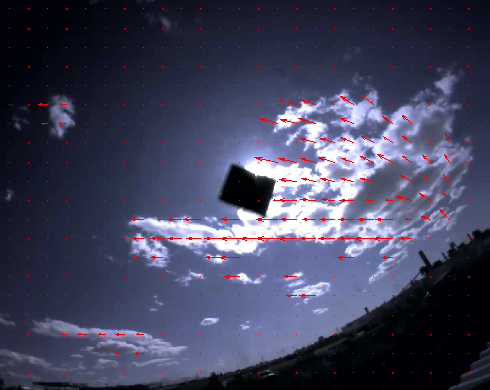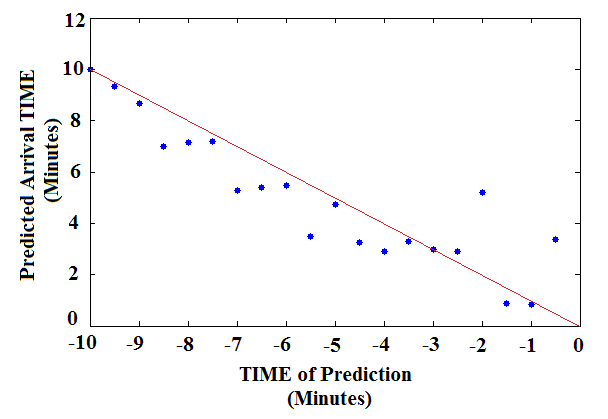
Department of Electrical & Computer Engineering
Signal and Image Laboratory (SaIL)
The University of Arizona®
|
|
|
|
Past Research |
Forecasting Solar Power Intermittency Using Ground-Based
Sky Imaging
Student: Vijai Thottathil Jayadevan
|
|
Solar power utilization at the utility-scale is a Grand Challenge.
A major problem is the intermittent output of solar power plants due to passing clouds and nighttime.
Intermittency limits the adoption of
 solar power by utility companies and industry because they require reliable, predictable power generation. Discovering new ways
to compensate for intermittency will accelerate the adoption of solar power.
Several techniques exist to counter the problem of intermittency, including interconnecting geographically dispersed
photovoltaic (PV) systems, using dispatchable spinning reserves, energy storage, and smart grids.
All these methods require accurate forecasting of PV power output for safe and efficient operation.
This research focused on using a ground-based sky camera to forecast cloud movements and thus predict intermittency.
solar power by utility companies and industry because they require reliable, predictable power generation. Discovering new ways
to compensate for intermittency will accelerate the adoption of solar power.
Several techniques exist to counter the problem of intermittency, including interconnecting geographically dispersed
photovoltaic (PV) systems, using dispatchable spinning reserves, energy storage, and smart grids.
All these methods require accurate forecasting of PV power output for safe and efficient operation.
This research focused on using a ground-based sky camera to forecast cloud movements and thus predict intermittency.
For example, utility operators require a ten-minute warning to bring spinning reserves online.
Industrial-scale loads that can be dynamically controlled by a solar-aware smart grid, such as water-pumps or chillers, have a
finite turn-on time; i.e., they start consuming power before they produce useful work.
For this reason, the decision to turn on or off a load or source requires an accurate forecast of the timing and duration of a
cloud event.
The images obtained from the sun tracking camera are analyzed and motion vectors are generated by comparing two consecutive
frames (see the figure above).
Based on these motion vectors, it can be determined whether the path of the clouds will cross the sun, and if they do so, the
time when this will happen can also be estimated. A 10-minute-ahead prediction made based on this analysis is shown in the graph
below:
 The dots represent the forecast, and the straight line represents the actual time before the cloud reaches the sun.
The dots represent the forecast, and the straight line represents the actual time before the cloud reaches the sun.
Under ideal circumstances (single-layer cloud with node formation, splitting, disappearance or appearance), our method can make
ten-minute-ahead forecasts that are accurate to within about 1 minute.
However, a known limitation of this method is that it does not account for cloud dynamics, i.e., cloud formation and
dissipation.
More sophisticated image analysis methods can be used to address this problem.
This work was a collaborative effort with Prof. Alexander D. Cronin in the
Dept. of Physics at The University of Arizona.
Publications:
-
Vijai T. Jayadevan, Jeffrey J. Rodriguez, Vincent P. A. Lonji, and Alexander D. Cronin,
"Forecasting Solar Power Intermittency Using Ground-Based Cloud Imaging,"
World Renewable Energy Forum (WREF), May 13-17, 2012, Denver, CO.
-
Vincent P. A. Lonij, Vijai T. Jayadevan, Jeffrey J. Rodriguez, and Alexander D. Cronin,
"Forecasts of PV power output using power measurements of 80 residential PV in-stalls,"
38th IEEE Photovoltaic Specialists Conference (PVSC), June 3-8, 2012, Austin, TX, pp. 3300-05.
[ PDF]
-
Vijai T. Jayadevan, Jeffrey J. Rodriguez and Alexander D. Cronin,
"A New Contrast Enhancing Feature for Cloud Detection in Ground-Based Sky Images,"
Journal of Atmospheric and Oceanic Technology, vol. 32, no. 2, Feb. 2015, pp. 209-219.
[ PDF]
|
|
|
1230 E. Speedway Blvd., P.O. Box 210104, Tucson, AZ 85721-0104
|
©2014 All Rights Reserved.
|
|
Contact webmaster
|
|
|
|
|
|
